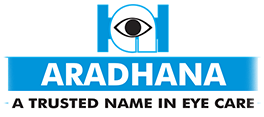SQUINT / STRABISMUS

Squints can be classified according to the direction of the turn of the eye:
If you have any of these common challenges, our expert team of Specialists would be glad to assist you. Please visit us for a review
- Esotropia (convergent) refers to an eye that turns inwards towards the nose;
- Exotropia (divergent) refers to an eye that points outwards;
- Hypertropia is when the eye is in an upward direction.
- Hypotropia is when the eye is in a downward direction
The squint may be present all or only part of the time, in only one eye or alternating between the two eyes.
Causes for squint:
- Refractive (focusing) abnormality/Eye muscle imbalance/ Injury
- It can run in families
- Illness can make it obvious
- Fatigue, stress or extended work load
- Rarely, it can be due to other diseases or illness
Early detection and treatment especially in children is important to prevent the development of "lazy eye".
Treatment options for squint
Non-surgical options- Not all patients require surgery for squints. Other methods such as: Prisms, refractive lenses, vision therapy, eye patching and certain medications have been used to help patients achieve fusion (alignment of the eyes) and minimize double vision.
Surgical options- The type and amount of surgery to perform for a particular squint is dependent on each individual's presentation and severity. This requires a thorough assessments and may require several follow-ups for accurate measurement and monitoring of the condition, prior to surgery.
What to expect on day of surgery?
Surgery can be planned under Local Anaesthesia or General Anaesthesia. General anaesthesia is preferred for children less than 18 years of age. Neurologist , Cardiologist and Pediatrician’s fitness is required pre-operatively. Chances of more than one squint surgery, diplopia(seeing double), over-correction, under-correction , infection ,may need to continue occlusion exercise and continue wearing glass post surgery is expected.
What to expect as part of squint evaluation?
Vision testing , cycloplegic refraction , Prism bar Cover test , Stereopsis testing, Binocular single vision check up and detailed fundus/retina evaluation.
Recovery & rest period after surgery?
Post squint surgery ,patient is expected to take complete rest for 2 weeks . Eyedrops and ointments are to be continued 6 weeks .
